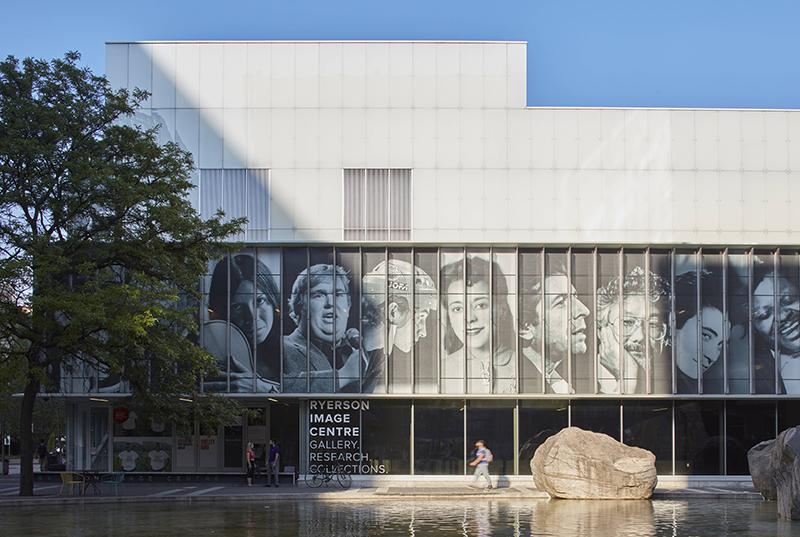
Ryerson Image Centre, 2018 © Riley Snelling, Ryerson Image Centre
A commitment to equity at the RIC
Jun. 18, 2020
What role can museums play at this urgent moment, and in the years to come, to bring real change to society?
More to the point: what should the Ryerson Image Centre be doing to meet the challenge raised by activists and concerned citizens over the past few weeks to change our culture for the better, and to address systemic racism, brutality, and discrimination experienced every day by Black people?
This extraordinary uprising for justice, here in North America and all around the world, has brought these issues to the forefront. We are hopeful that this moment will bring about real change and progress.
But to make this change last, and to take it still further, we will all have to do more.
Since the RIC opened to the public in 2012, its mission has been rooted in photo historical research and critical inquiry around issues of social justice. We have aimed to foreground stories that have been historically under-represented in museum exhibitions and collections, and bring forward the work of artists and scholars who address these issues. We have sought enlightened partners and collaborators, both individuals and fellow institutions, to work with us towards this mission.
As Director of the RIC, I am committed not only to amplifying the voices of artists we work with, and photo histories long marginalized and ignored, but also to solidarity with those who work for justice and think critically about systems of oppression.
At the RIC, after spending the past few weeks watching and listening, these are some of the changes we will be making:
- We are donating funds in support of two Toronto organizations, BAND (Black Artists’ Network in Dialogue) and BLAC (Black Legal Action Centre). BAND is a community arts organization that supports and showcases the work of Black artists and cultural workers, and we’ve partnered with them on several past exhibitions and programs. BLAC provides legal aid services to Black Ontarians in need, and fights anti-Black racism through advocacy and education.
- Meaningful action comes from looking critically at ourselves. Several members of the RIC team are asking me (and Ryerson University leadership) how we will address systemic bias. I support them in this. I will listen to them, and to Black and Indigenous faculty, staff, students, and community members, in order to make thoughtful and informed improvements.
- We will be examining our internal work culture through anti-oppression, anti-discrimination, equity, and cultural sensitivity training.
- One of the greatest challenges to becoming a more representative institution is diversification of our staff. This kind of systemic change requires consistent, committed work. I have been working to add diversity through new curatorial positions, and hope to complete this effort in the near future. In addition, I will work with Ryerson personnel to audit our hiring practices and ensure that they are free of bias.
- While we continue to strive for diversity within our collections, I recognize that we have more to do to ensure representation of BIPOC artists and histories. I will work hard to build funding for the acquisition of work by Black and Indigenous photographers, as well as artists from other under-represented communities from around the world. A new collection initiative is underway and will be announced soon.
The events of the past few weeks have crystallized a turning point in the long and arduous struggle to overcome systemic racism and violence against Black people. The medium of photography has played an important and often complicated role throughout this struggle. Over the past few weeks we have seen its power and potential repeatedly—both as a tool for documenting violence, and as a bullhorn, broadcasting images of the movement to reform society.
Photographers—and the institutions that bring their work forward—can do much to help people understand other perspectives, witness acts of oppression, think critically about difficult issues, and accelerate justice. We invite you to visit the RIC—whether online or when we reopen—to view the world through another person’s eyes. The act of looking can help us all to be a part of this moment of change.
Paul Roth
Director